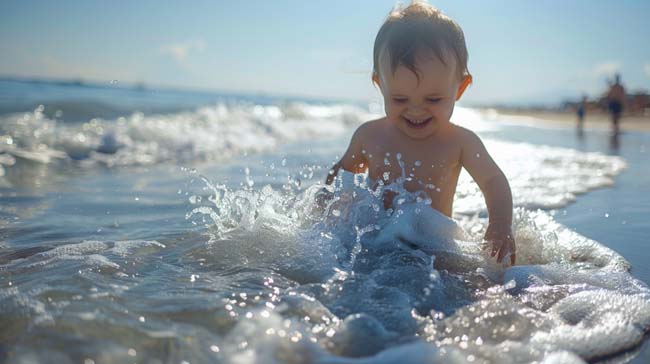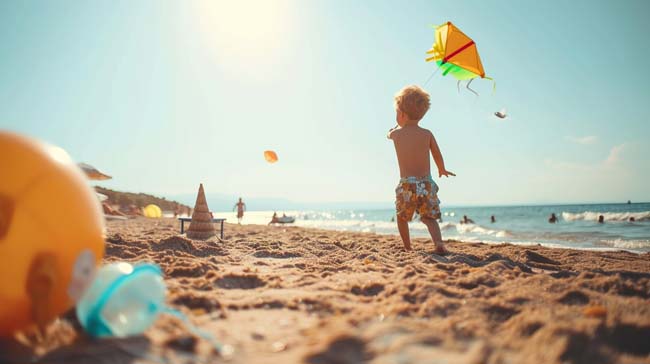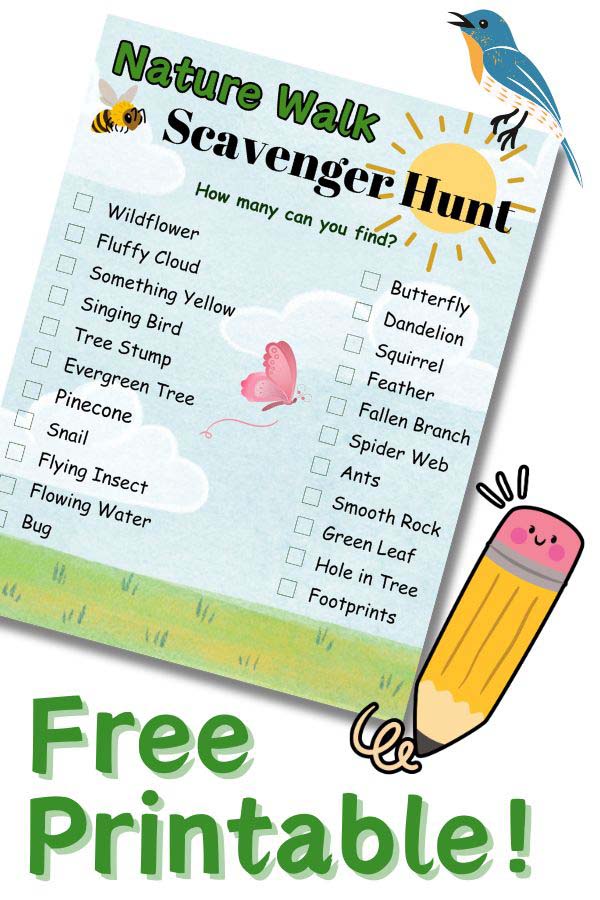As a parent, your child’s safety is your top priority which is why you make sure to baby-proof your home. You might even get a little overprotective at times and this is completely understandable, especially if you’re a new parent.
So, don’t overlook the crucial aspect of protecting your baby from the sun’s UV rays. Babies have thin delicate and sensitive skin, which leaves them vulnerable to UV damage and sunburn.
A common misconception is that sunscreen is only needed when skies are clear and is unnecessary on cloudy or overcast days. UV radiation levels vary depending on factors like cloud thickness and altitude but a significant amount of UV rays still reach us. It is estimated that scattered clouds allow 89% of UV transmission while broken clouds allow 73%. Whether it’s clear or cloudy, make sure you apply sunscreen on your baby before you venture outdoors and be sure to stay in shade-covered areas with them on clear days.

How to Pick a Baby-Safe Sunscreen
There’s no doubt that sunscreen can help to protect your baby from sunburn, but not all sunscreens are equal. Sunscreens are divided into two main categories – chemical sunscreens and physical or mineral sunscreens.
Chemical sunscreens contain ingredients that absorb UV rays from the sun, but the downside is that some of these chemicals can affect your baby’s physical and mental growth and development.
Physical sunscreens contain minerals such as zinc oxide and titanium dioxide that are not absorbed by the skin; instead, they form a protective barrier on the surface of the skin to protect against UV rays. This is why you should use physical sunscreens for babies and toddlers.
When choosing a baby-safe sunscreen, make sure that it is broad spectrum sunscreen that offers protection from both UVA and UVB rays and it should have an SPF of 30 or higher. There are plenty of baby-safe sunscreens in the market that fit these requirements so you should check community reviews and experts’ advice on sunscreen for babies to find one that suits your little one best.

The Right Time to Start Applying Sunscreen
When it comes to skincare, the phrase “it’s never too early to start” is thrown around like confetti. When it comes to baby sunscreen, it’s best to wait until your child is at least 6 months of age.
According to the British Association of Dermatologists, babies have a higher surface-area to body-weight ratio which means that their exposure to chemicals in sunscreen is greater, which can cause a reaction. They advise parents to keep babies under 6 months out of direct sunlight.
If your child is less than 6 months old, use clothing and shade for protection when you go outdoors. However, once they are 6 months old, make sunscreen a part of their skincare routine when leaving the house.

How to Apply Baby Sunscreen
Getting your squirming, giggling bundle of joy to sit still long enough for you to apply sunscreen can be nothing short of a herculean task! Each child is unique so you need to figure out what works for your little one.
You can make it a game by singing a silly sunscreen song or you can distract them with their favourite toy or book so that they become accustomed to the process.
When it comes to quantity, a good rule of thumb is to use about a teaspoon of sunscreen for each arm and leg, and about two teaspoons for the torso, back, and face. Pay close attention to areas that are often overlooked, such as the ears, back of the neck, tops of the feet, and hands.
Babies can sweat or rub sunscreen off their skin so you should reapply their sunscreen every few hours. If they are in the water, make sure that you use a waterproof sunscreen and reapply it every two hours or more frequently depending on the instructions on the label.

Looking for fun activities for toddlers? Check these out!








join the conversation